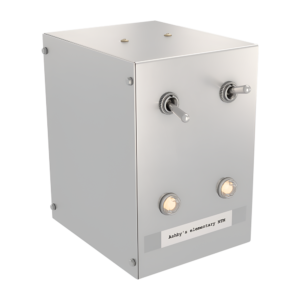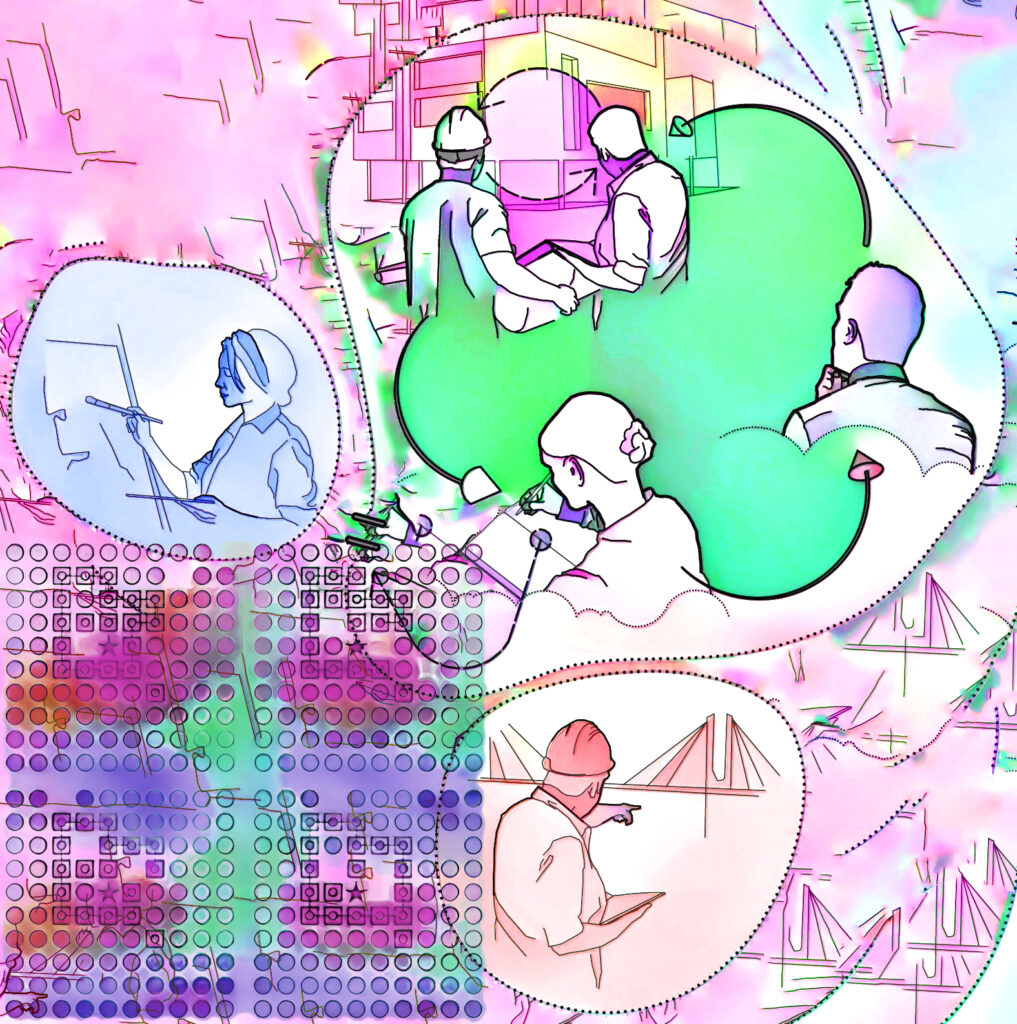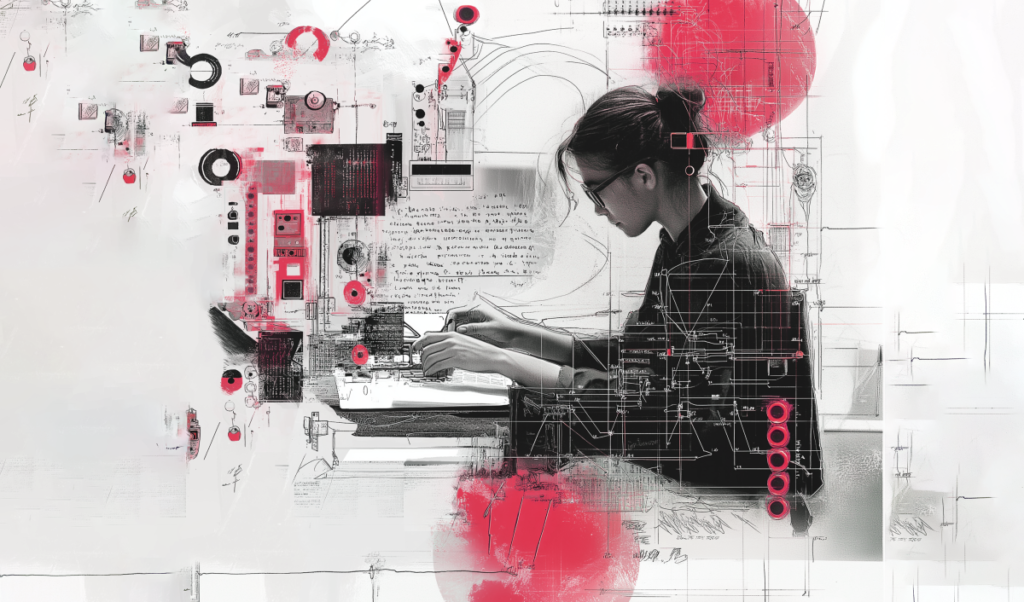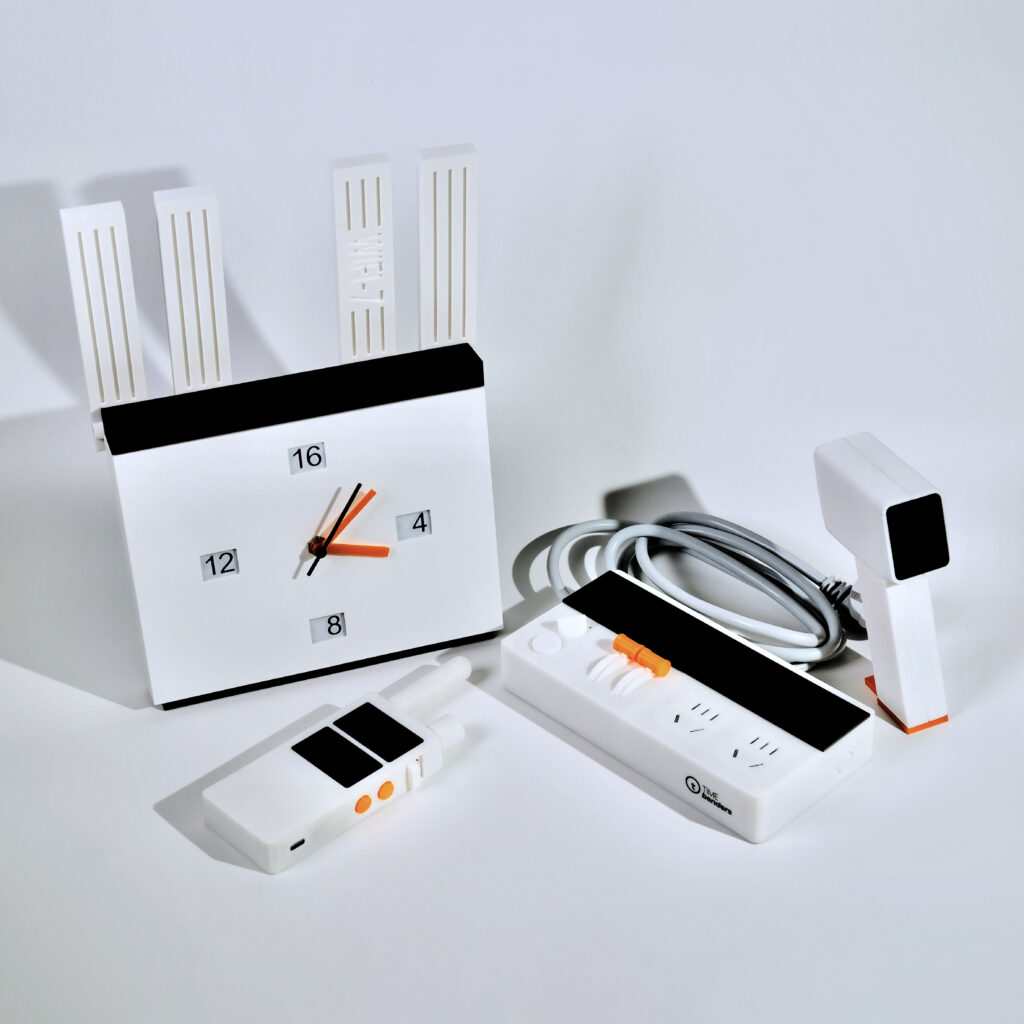In a world increasingly dominated by technological systems that promise reliability, predictability, and control, there exists a family of actual and hypothetical devices, so-called non-trivial machines, that challenge these assumptions. The Contemporary Elementary Non-Trivial Machine (NTM) was designed at the Design Cybernetics Group as a new addition to this family of devices, challenging its users to question our relationship with technology.
The origin of the Non-Trivial Machine dates back to the formulation the concept of the “Black Box” in the early 20the century. In the mid-20th century cybernetician W. Ross Ashby designed and built a device that implements the Black Box concept. The device became known as the “Ashby Box.” It is a minimal device with a 2-bit input interface and a 2-bit output interface that behaves in seemingly unpredictable ways despite having a deterministic inner structure. This device exemplifies Ashby’s epistemological position that everything we encounter is essentially a “black box” whose inner workings we must infer through probing and observation.

Later, Heinz von Foerster developed this position, along with other influences, into the radical-constructivist field of second-order cybernetics. As a part of this development, von Foerster conceptualized his hypothetical Non-Trivial Machine based on the Ashby Box and contrasted it against his likewise hypothetical Trivial Machine. While the Trivial Machine produces consistent outputs for given inputs, the Non-Trivial Machine changes its internal states with each operation, making its behavior much harder to predict.
Recent work undertaken by Thomas Fischer and Li Hengjie of the Design Cybernetics Group resulted in a redesigned Elementary Non-Trivial Machine based on the Ashby Box, reimagined as a handheld product using contemporary technology and production processes. This redesign, based largely on a speculative remake of the Ashby Box, is not merely an exercise in nostalgia or historical preservation, but rather a deliberate attempt to disseminate constructivist and cybernetic concepts to new audiences in the 21st century.

The contemporary Elementary NTM maintains the essence of the original: it has a 2-bit input interface and a 2-bit output interface, yet its behavior it practically impossible to predict reliably. Unlike most technological objects in our daily lives – from toasters to self-driving cars – which are designed for utility and predictability, the NTM intentionally demonstrates the limits of predictability and control.

The significance of the Contemporary Elementary NTM extends beyond academic interest. In today’s context, everyday life is increasingly shaped by powerful and far-reaching black boxes such as the algorithms that increasingly govern various aspects of our lives from behind the opaque walls of data centers. In this context, the Contemporary Elementary NTM offers several contributions:
- It demonstrates hands-on that even very simple technical devices can behave unpredictably, regardless of a user’s education or technical expertise.
- It shows that failure to anticipate the consequences of technical deployments is not merely a mistake of the uninitiated but ultimately inevitable.
- It serves as a conversation starter and potential catalyst for broadening contemporary discourse on technology and power.
- It invites everyone to join in collective reflection on who we are and who we want to become in an age of technological control.
The Contemporary Elementary NTM belongs to a special family of technical objects. While most devices help us negotiate our relationships with our environments (getting things done) or allow us to play, NTMs invite us to negotiate our relationships with ourselves. They function as mirrors that prompt us to ask: Who are we, and who would we like to become? In an era where technology increasingly outpaces ethics and humanities, the Contemporary Elementary NTM offers an accessible, tangible way to engage with profound questions about our technological future.
References


